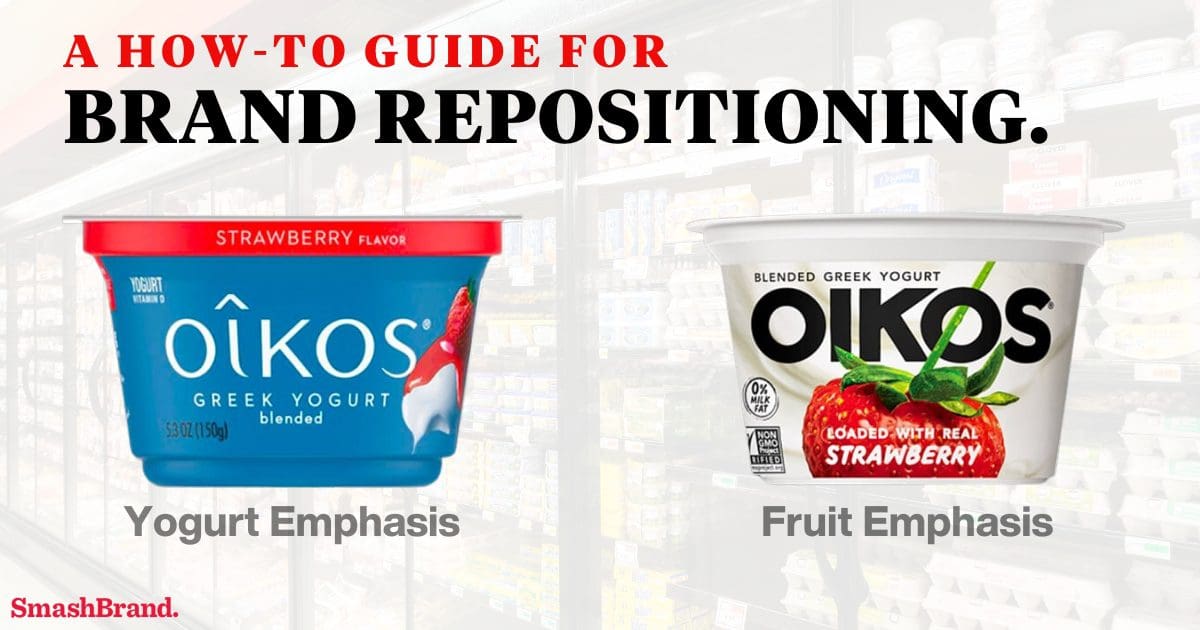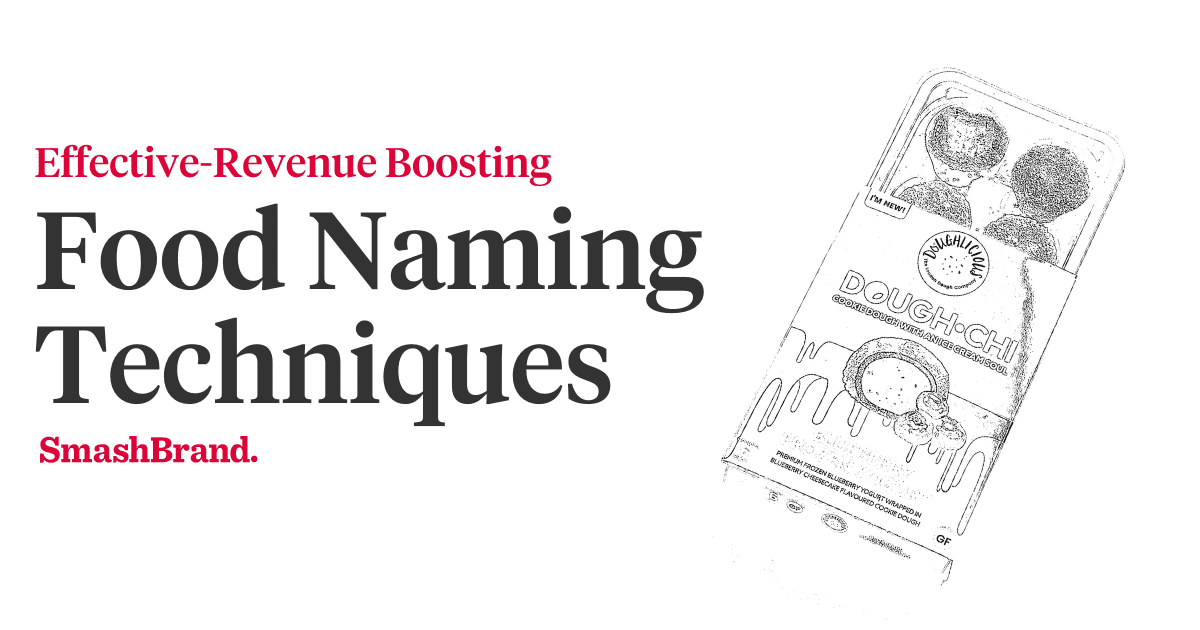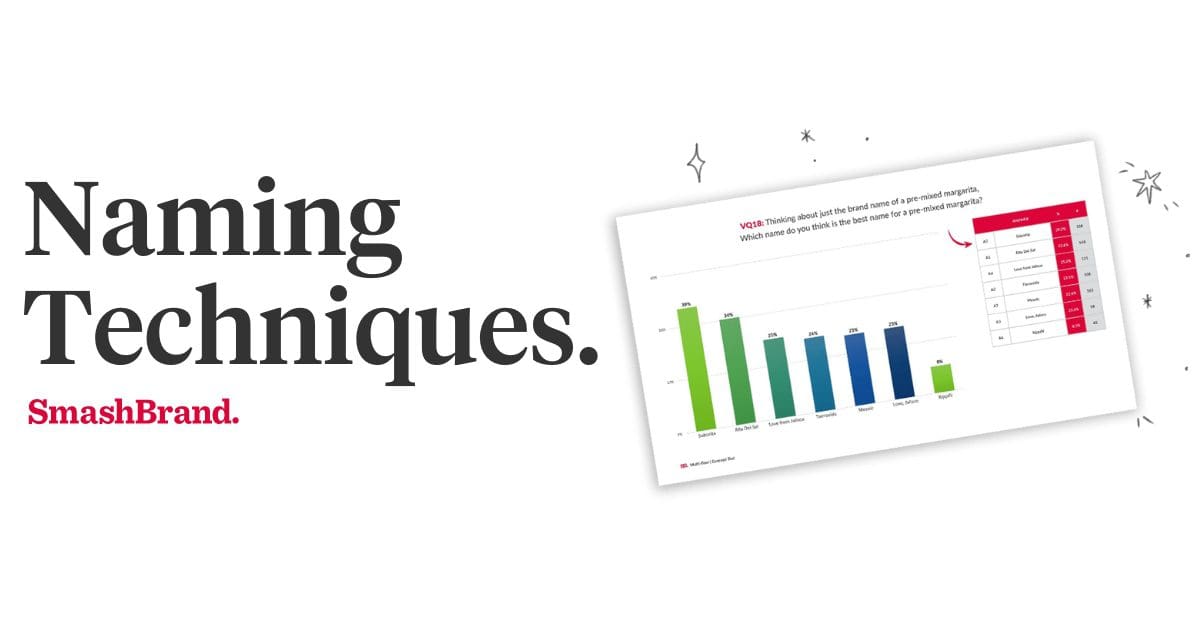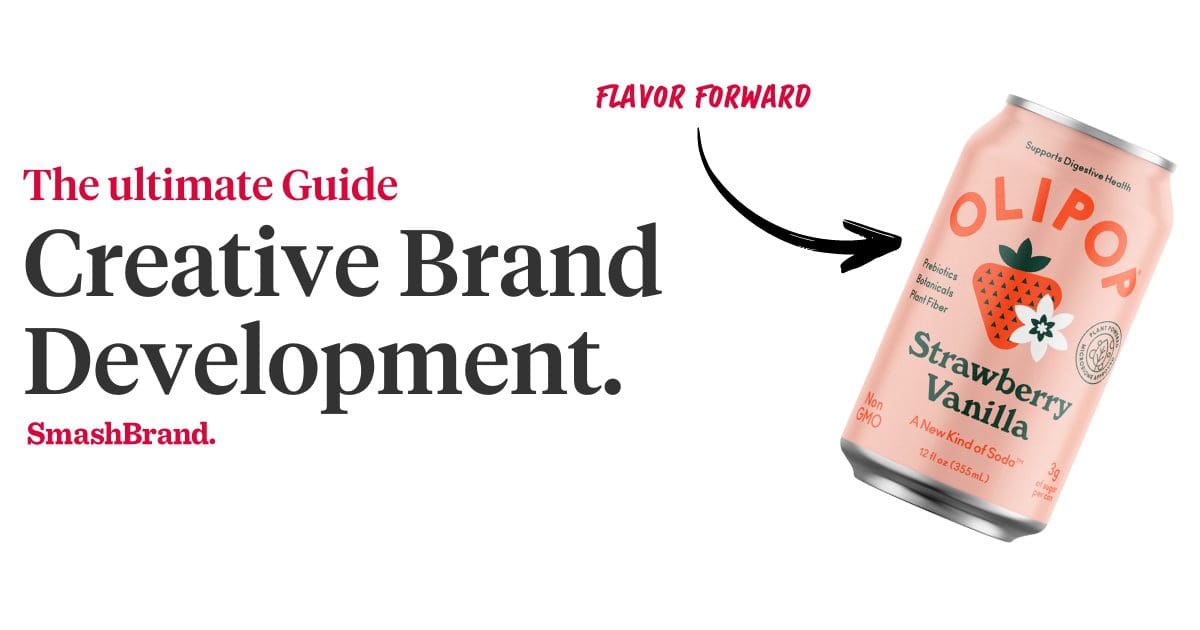Listen to This Article

Wouldn’t it be nice if brand positioning was a one-and-done task where we could solely focus on driving more revenues through an adaptive marketing campaign? Sadly, this isn’t a reality. While most agree that declining revenues (which is a symptom) is a valid reason to consider brand repositioning, we must understand the cause before we push forward.
…And there are many reasons for brand repositioning.
In this article, we will learn how to reposition a brand correctly. We will examine the root causes that demand a brand repositioning strategy while helping you understand why brands experience disappointing outcomes after repositioning.
Let’s start with a quick definition of brand positioning.
Get your Hands on the SmashReport!
And enter to win a FREE brand diagnosis worth $20,000.
*The SmashReport is a monthly newsletter for FMCG and CPG brands, helping them stand out in the competitive retail marketplace.
What is Brand Repositioning?
Brand repositioning, also known as a brand relaunch, is a strategic process that involves reshaping a brand’s perception, positioning, and identity in the marketplace. It goes beyond mere cosmetic changes and redefines how a brand is perceived by its target audience, increasing its relevance and consumer appeal.
Brand repositioning entails a comprehensive evaluation and adjustment of various elements, such as messaging, visual identity, product offerings, target market, and competitive positioning. It requires a deep understanding of consumer preferences, market trends, and the brand’s unique value proposition.
Repositioning vs. Rebranding
There’s an assumption among business owners that rebranding is the same thing as repositioning. While there is a crossover between the two, both focus on a different outcome. Here’s a short definition explaining each:
Repositioning: Brand repositioning involves reshaping the perception and positioning of a brand in the marketplace while retaining its core identity.
Rebranding: Rebranding, on the other hand, entails a visual and communications transformation, including changes to the brand’s name, visual identity, messaging, and overall brand essence.
The mistake many brands make is assuming that a rebranding campaign always results in product differentiation. A new look you aim at a target audience may lead to disappointing results if you believe it will immediately impact the brand strategy.
Reasons For Repositioning
The first step to successful brand repositioning is understanding the “why” behind the effort. As mentioned, declining revenues is not a specific enough answer when asking why to reposition a brand. You must know the correct answer as it directly impacts the brand repositioning strategy.
Not Meeting Consumer Expectations
Just because you have identified and now “hope” to reach a target audience through distinct positioning doesn’t guarantee they will understand nor embrace your efforts. Consumer perception is influenced by many factors, including what exists in their minds before considering your product and the visual cues within their range of site.
Through a brand diagnosis, a brand development agency performs social listening and consumer research to assess their feelings toward a brand. Through this process, we can understand where there is a disconnect between the brand and the consumer. When you identify this friction point, you can reposition your brand to align more with their expectations.
Changing Consumer Interests
Sometimes, in the case of sustainability, changing consumer interests are apparent, but more often than not, subtle shifts in interest occur across every category. Brands that recognize, verify with market research, and reposition to capture these evolving consumer interests put themselves in a position to capture greater market share from their target customer.
Influx Of New Competitors
Whether finding a niche in a broad category or entering a new category, competition eventually catches up. What initially made consumers ooh and ahh over your product will eventually become white noise. You must identify new brand positioning where you find a competitive advantage and seem unique to the consumer.
Expanding Into New Markets
The saying “For every action, there is an equal and opposite reaction” rings true when performing a line or brand extension. Creating a new product for a new market to capture greater market share demands that you review your current positioning. The company that started with a razor and now offers shaving cream must address the change in how consumers perceive their brand.
Read More: Line Extension vs. Brand Extension
Correcting Negative Associations
When you are aligned or create a negative association in the marketplace, customer perception changes instantly. Like a slightly damaged collectible, a brand image loses significant value when it takes immediate action and has the right strategy to address consumer concerns. Brand repositioning is there to put the brand in a positive light.
The Risk of Repositioning
Wouldn’t it be great if the upside of brand changes didn’t come with a downside? The truth is that there is a significant amount of risk when repositioning a brand, much of which a brand can mitigate through various means of brand testing. Here’s a look at the dangers of changing a brand’s position without taking precautionary measures to ensure it doesn’t happen.
Loss of Customers
Leading with the most impactful CPG brand metric, every reposition risks making consumers say, “This just doesn’t seem like it’s for me anymore.” Sometimes this is a blunt disagreement with your new position, other times, the change creates questions about what they want from a product, second-guessing their trust in your brand.
Loss of Retail Partners
Retail partners are critical to an omnichannel CPG brand’s success. One of the biggest mistakes you can make during the repositioning process is not considering each of your retailers and how the change impacts the relationship. Repositioning can cost a brand’s retail relationships because of competitive conflicts, inconsistent branding and messaging, product cannibalization, distribution conflicts, and lack of retailer support.
To mitigate this risk, a brand should consider these throughout its brand strategy and provide conclusive data to support the decision to make a positioning change.
Unexpected Costs
Repositioning a brand can be costly, and if you inaccurately assume the necessary investment, your unfinished brand pivot can leave you in a dangerous spot. Unexpected costs strain the company and significantly delay the process. Not having enough dedicated capital causes brands to scramble, figuring out how to make this happen through a revised budget or outside investment.
Brand Inconsistency
Whatever effort you assume is necessary to change your positioning to create a new brand identity is most likely wrong, and the overhaul will demand more time and resources. From the brand guidelines to the marketing strategy, not having a step-by-step approach can lead to brand inconsistency which is a recipe for confusing consumers.
Brand Repositioning Strategy
Let’s move to the brand repositioning strategy with the PSA behind us.
Review The Current Brand Positioning
The first step when considering a repositioning initiative is determining whether a change is warranted. A brand audit and consumer feedback may determine that there is no need to reposition the brand. Instead, the brand needs to do a better job of reaching consumers with the current positioning.
If there is a better opportunity than the current brand positioning, the next step is looking at what’s working and what’s not. Looking at the existing brand equity to determine what we need to pull into the new strategy is an important step that many brands need to remember.
Analyze The Competitive Landscape
Before we let our creative juices flow on product repositioning, we must look at competitors in the current retail channels. In this competitive audit, we are looking for the following:
- Category trends both by brands and consumers.
- How many channels each competitor sells through.
- What points of differentiation are currently working.
Effectively, we are performing a SWOT analysis to identify the strengths, weaknesses, opportunities, and threats.
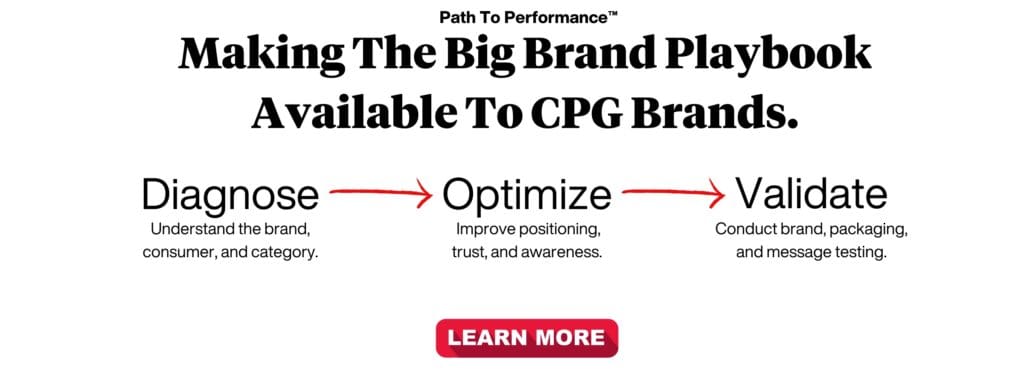
Review Competitive Gaps
Upon completing the brand, consumer, and competitor audit, it’s time to review the information to determine where to reposition ourselves to gain a competitive advantage. Our collected data should present gaps that the current competitors are not yet filling. Identify and research several gaps to determine which offers the most impactful positioning.
Test Position Statements With Consumers
Identifying a gap in the market and filling it with your product is not enough to ensure success. Nor is creating messaging that you “feel” matches the consumer’s expectation. The point of distinct positioning is as much about perception as reality, and to solve this riddle, consumer testing must be a part of every branding strategy.
Create The New Identity
Now that we have the most distinctive messaging to represent our new positioning, it’s time to bring in the visual side of branding for support. Applying the previous brand assets we’ve decided to retain, we can add visuals that strengthen the message we’ve put forth.
Communicating The New Brand Position
How and where you communicate the change in a brand’s position is critical to the initiative’s success. Communicate the new position through a proactive public relations campaign and every marketing effort the brand engages in.
Brand consistency is an essential part of this effort. Ensuring every conversation resonates with the same message and leaves the same impression.
In answering the quiet conversations and showcasing your new position, getting ahead of consumers and media is the best way to take control of your position.
Brand Repositioning Example
Let’s look at an example of brand repositioning that has received significant media attention. What’s interesting about this example of brand repositioning is how they draw a hard line on who they are by bucking the latest packaging design trends.
Kraft Packaging Redesign
Instead of hinting at being the top choice for grilled cheese, the new package doubles down on this use case. The packaging design follows up its effort to showcase the grilled cheese by clearly stating the use of real dairy by stamping it onto the package. When you combine these two, you see clear positioning of being the choice for those who say no to plant-based products and yes to past-time favorites.
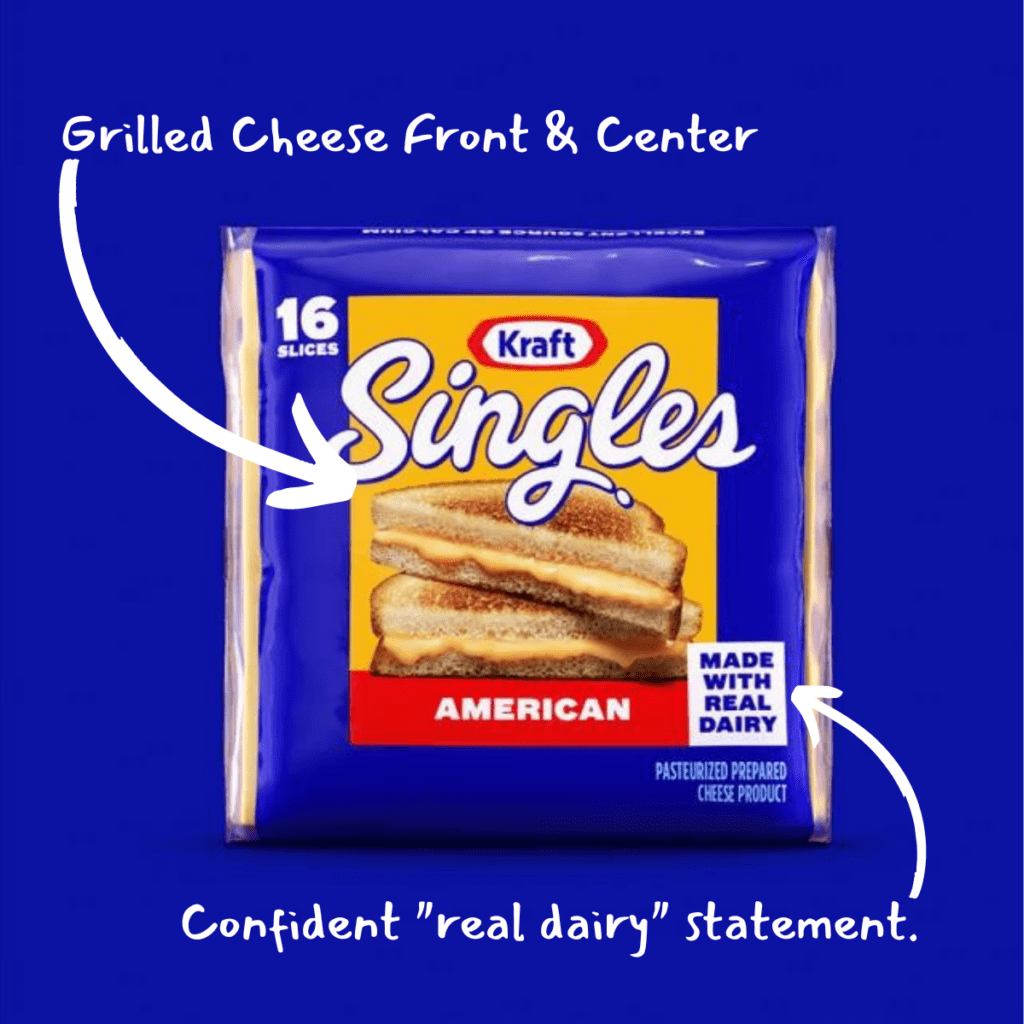
What we should take from this brand repositioning case study is that sometimes reviewing the latest CPG trends (plant-based and gluten-free), you will find a gap in the market by positioning yourself away from these trends.
Data-Driven Brand Development For CPG Brands
If you are looking for an agency that can help you define and execute new positioning that attracts more potential customers, we can help. SmashBrand is a brand development agency for CPG brands. Our PathToPerformance™ process guarantees a performance lift.
Frequently Asked Questions
Is brand repositioning only suitable for struggling brands?
No, brand repositioning can benefit struggling brands and those looking to enhance their market presence proactively. It allows businesses to adapt to changing market dynamics and reach new audiences.
How long does the brand repositioning process take?
The duration of the brand repositioning process can vary depending on the complexity of the brand, market conditions, and the extent of changes required. It typically involves several months of research, planning, and implementation.
Is it necessary to change the brand name during repositioning?
Changing the brand name is not always necessary for successful repositioning. Companies can sometimes retain the brand name while focusing on reshaping the brand’s identity, messaging, and target audience.
How can I measure the success of brand repositioning?
You can measure brand repositioning through key performance indicators such as:
- brand awareness
- customer sentiment
- sales figures
- website traffic
- social media engagement
Each of these help to measure the success of brand repositioning. Regular monitoring and analysis of these metrics will provide insights into the effectiveness of the repositioning strategy.

